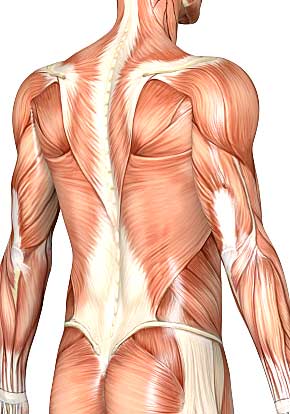Muscle and Myofascial Disorder
What
is myofascial Disorder? Myo refers
to muscle. Fascia is a thin, tough,
elastic type of connective tissue that wraps most
structures within the human body, including muscles.
Pain from muscles, tendons, ligaments and fascia are
the most common problems. Muscle shortening caused
by muscle spasm and contraction is an important
factor in pain. When a muscle shortens, it pulls on
tendons and stresses the joints they move. It also
promotes deterioration and contributes to
degenerative changes resulting in tendonitis and
osteoarthritis. Because these conditions are often
diagnosed as ‘local’ conditions, they might not
receive the appropriate diagnosis or treatment.
